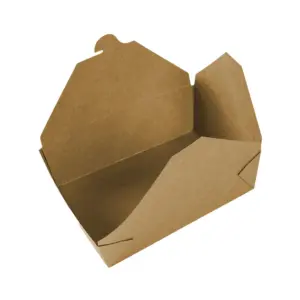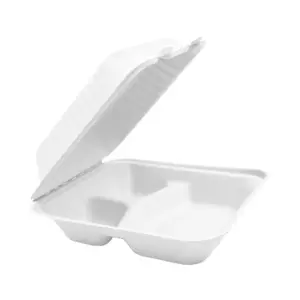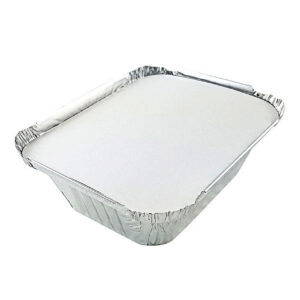21 Jun, 2024
How to Choose the Perfect Takeout Containers
Selecting the perfect takeout containers isn’t just about functionality—it’s also a reflection of your restaurant’s commitment to sustainability and customer satisfaction. In British Columbia, where regulations on single-use plastics are stringent and environmental consciousness is high, finding the right balance between compliance, practicality, and eco-friendliness is crucial. Whether you’re serving up sizzling hot dishes or chilled salads, here’s a guide to navigating the maze of options to ensure your takeout containers not only preserve food quality but also align with your values as a responsible business in BC.
- Compliance with Regulations: Ensure that the containers comply with British Columbia’s regulations regarding single-use plastics and packaging. These regulations may include restrictions or requirements related to recyclability, compostability, and material sourcing.
- Sustainability: Opt for containers made from sustainable materials such as biodegradable plastics, compostable materials like bagasse (sugarcane fiber), or reusable options like stainless steel or glass. Look for certifications such as BPI (Biodegradable Products Institute) or ASTM D6400 for compostability.
- Functionality: Consider the containers’ ability to safely transport and preserve the quality of your food. Ensure they are leak-resistant, microwave-safe (if needed), and suitable for both hot and cold foods to meet customer expectations.
- Size and Portion Control: Choose containers that match the portion sizes of your menu items to minimize food wastage and control costs effectively. Different sizes should be available to accommodate various dishes and customer preferences.
- Brand Image and Customer Experience: The design and quality of the containers can impact your brand’s image. Select containers that enhance the presentation of your food and align with your brand’s aesthetic and values.
- Cost Considerations: Evaluate the cost-effectiveness of different container options while considering durability and reusability. Long-term savings from reusable or durable containers may outweigh upfront costs of single-use alternatives.
- Waste Management: Consider how the containers will be disposed of after use. Encourage proper disposal practices among customers and ensure containers can be recycled or composted where applicable.
- Supplier Reliability: Choose suppliers that can consistently provide high-quality containers in the quantities you need, while also offering support in navigating local regulations and sustainability certifications.
Materials allowed in BC
 Paper
Paper
Paper takeout containers offer numerous benefits, making them a popular choice for both consumers and businesses. They are eco-friendly, often made from recycled materials, and are biodegradable, reducing environmental impact compared to plastic alternatives. Additionally, they are lightweight yet sturdy, providing reliable transport for a variety of food items. Paper containers can also be easily customized with branding, enhancing marketing efforts. However, it is essential to ensure they have proper linings to prevent leaks and maintain food quality. Watch out for potential issues like sogginess with particularly wet or greasy foods, and ensure the containers are certified for food safety to avoid contamination.
 Sugarcane
Sugarcane
Sugarcane takeout containers offer several compelling advantages that cater to both environmental and practical considerations. Made from bagasse, a byproduct of sugarcane processing, these containers are biodegradable and compostable, making them a sustainable alternative to traditional plastics. They are sturdy and capable of withstanding both hot and cold foods, providing reliable insulation without compromising on food safety or quality. Sugarcane containers are also microwave and freezer-safe, offering versatility for reheating and storage. However, it’s essential to ensure that these containers are certified as compostable to avoid confusion with non-compostable plastics. Additionally, while they are generally sturdy, prolonged exposure to very wet or oily foods may compromise their integrity, so selecting appropriate sizes and designs for specific food types is advisable.

Recyclable Plastic
Aluminum
Aluminum takeout containers offer a range of advantages, making them a favored option for food packaging. They are highly durable, providing excellent protection against leaks and spills, and can withstand high temperatures, making them suitable for both hot and cold foods. Aluminum containers are also recyclable, contributing to environmental sustainability. They effectively retain heat, ensuring that food remains warm for longer periods. However, it is important to be cautious about potential reactions with acidic foods, which can cause the aluminum to corrode or alter the taste of the food. Additionally, while aluminum is generally safe, ensuring that containers have food-grade linings can prevent any risk of contamination.

In conclusion, choosing the right takeout container for your restaurant is a multifaceted decision that goes beyond mere practicality. It’s about harmonizing compliance with local regulations, maintaining the integrity of your food, and demonstrating your commitment to environmental sustainability. By carefully considering the material, design, and environmental impact of your containers, you can enhance your customers’ dining experience, support the local eco-friendly initiatives, and uphold the values of your business. Remember, the right container not only preserves the quality of your dishes but also reinforces your brand’s dedication to sustainability and customer satisfaction. Make a thoughtful choice, and your takeout service will be a testament to your restaurant’s excellence and responsibility.

